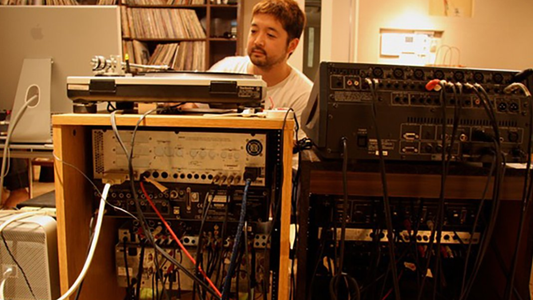
Jóhann Jóhannsson – IBM 1401, A User’s Manual (2006)
By Rafi Mercer
A faint hum, mechanical yet melodic, opens the space. Then strings enter, lush and swelling, carrying warmth into the cold frame. This is how Jóhann Jóhannsson begins IBM 1401, A User’s Manual, his 2006 meditation on technology, memory, and loss. It is not simply an album about a computer. It is an elegy — for a machine, for an era, for the fragile way human imagination and technology intertwine.
The IBM 1401 was an early mainframe computer, introduced in 1959. For many businesses, universities, and institutions, it was the first step into the digital age. In Iceland, where Jóhannsson grew up, his father worked with one of these machines. Ingeniously, the engineers programmed the 1401 to play music by feeding signals through its internal circuits, transforming the whir of computation into audible tones. These recordings survived on tapes, brittle fragments of an almost-forgotten experiment. Decades later, Jóhannsson used them as the seed for his composition.
The album unfolds in five movements. Each is built on the dialogue between those ghostly machine sounds and the rich resonance of a string orchestra. The effect is haunting: the mechanical bleeps are fragile, uncertain, almost plaintive, while the strings envelop them with human warmth. It is as if the machine is speaking and the orchestra is consoling, translating, mourning.
The opening movement, “Part 1 / IBM 1401 Processing Unit,” introduces the machine’s tones, thin and wavering, before the orchestra swells in response. “Part 2 / Instruction Set” builds tension, strings surging against the frail machine voice. “Part 3 / Memory Circuits” reaches a peak of emotional resonance, the orchestra soaring while the electronic tones pulse beneath, like a failing heartbeat. By the time we reach “Part 4 / Control Program,” the two elements are inseparable: human and machine entwined. The final “Part 5 / The Sun’s Gone Dim and the Sky’s Turned Black” transforms the material into a stark, apocalyptic ballad, with a sampled voice singing against bleak orchestral chords. It is devastating, a requiem not just for a machine but for all endings.
What makes IBM 1401, A User’s Manual so affecting is its humanity. Jóhannsson treats the computer not as cold artifact but as character, as presence. Its sounds are frail, almost like a child’s voice. The orchestra does not overwhelm but embraces, creating dialogue rather than dominance. The piece becomes a meditation on mortality: just as people age and fade, so too do machines, carrying their own histories of use, memory, and obsolescence.
In doing so, Jóhannsson also reframes technology itself. Too often, the machine is seen as alien, as other. Here, it is kin. It is something we build, we rely on, we mourn. The album reminds us that our tools are not separate from us but extensions of us, carrying our imagination, our fragility, our impermanence.
Culturally, the album was significant in reasserting the power of modern composition as storytelling. It bridged electronic music, classical tradition, and conceptual art. It appealed to audiences beyond classical circles — ambient listeners, post-rock fans, cinephiles — because it was cinematic in scope, narrative in structure, emotional in depth. It showed that experimental music could also be generous, accessible, deeply moving.
Listening today, the album feels prescient. In an age where technology defines our lives, where machines carry both our memories and our vulnerabilities, Jóhannsson’s work resonates deeply. It is not an attack on technology, nor a blind celebration. It is a recognition of its place in our lives — intimate, flawed, essential.
On vinyl, the record feels almost like ritual. The fragility of the machine tones, layered with the lushness of strings, gains depth and tactility. The act of turning sides mirrors the act of remembering — fragments, pauses, continuations. The physical medium underscores the album’s theme: all technologies, even vinyl, carry their own mortality, their own beauty in imperfection.
What endures about IBM 1401, A User’s Manual is its tenderness. Jóhannsson refuses to treat the machine as spectacle. He treats it as subject, as companion, as something worthy of elegy. In doing so, he expands what music can do: not only console humans but dignify the tools through which we live, work, and dream.
To play this record is to enter into a meditation on memory, mortality, and connection. You hear the machine’s faltering voice. You hear the orchestra’s embrace. And in that dialogue, you hear yourself — fragile, impermanent, yet still capable of beauty.
Rafi Mercer writes about the spaces where music matters. For more stories from Tracks & Tales, subscribe, or click here to read more.







